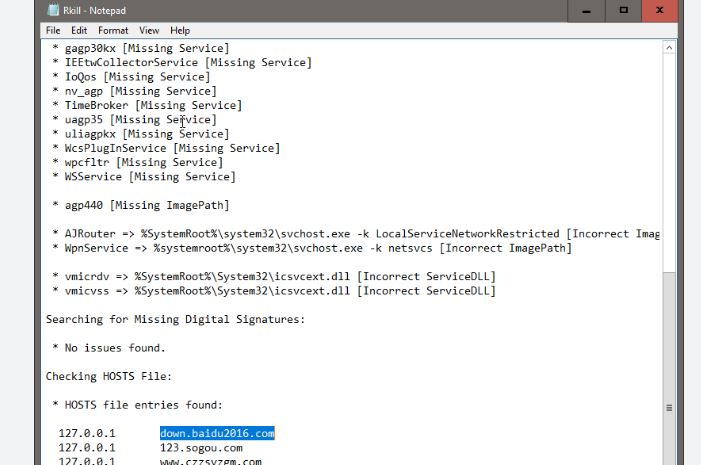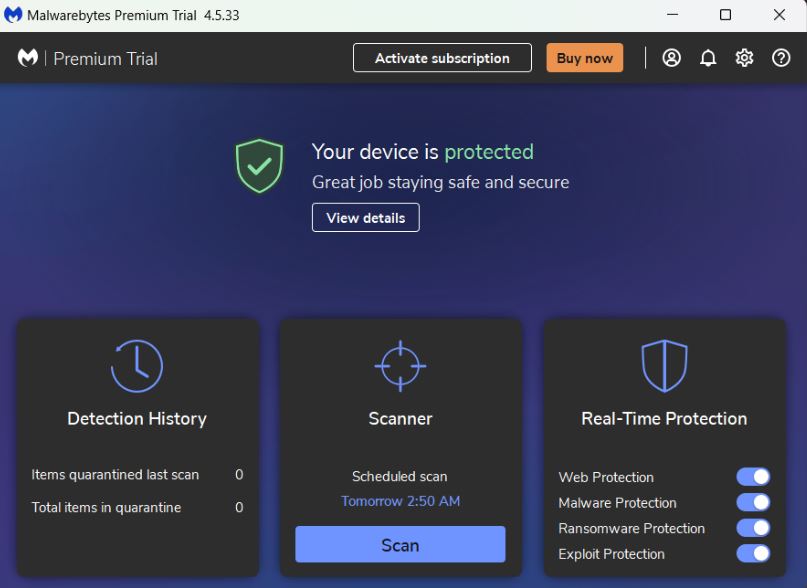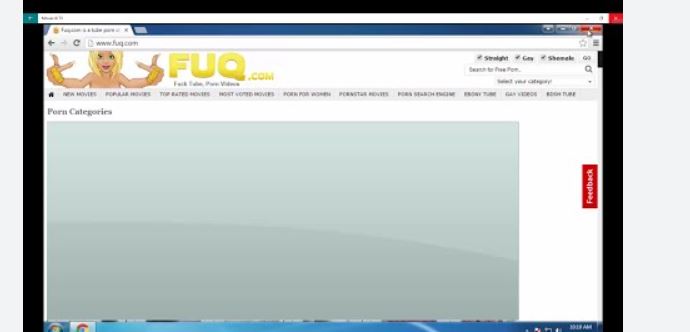In recent times, the fuq.com virus has emerged as a huge threat that affects and irritates PC users everywhere.
This malicious software invades systems, takes control of browsers, and inundates users with unsolicited pop-up advertisements.
The website fuq.com has been linked to unsolicited content delivery, especially about adult content, and browser hijacking.
When you visit the website, your browser may be taken to unanticipated locations containing adult content without your consent.
You might see stuff you don’t want to see and find this to be fairly intrusive.
Additionally, the Fuq.com website inundates you with pop-up and banner ads along with adult content, adding to the frustration of using the internet.
The fuq.com virus not only makes browsing more challenging, but also puts system security and private data at risk.
We will examine how to identify it and what occurs when it infects your computer.
Don’t worry, we’ll also provide you with an in-depth guide on how to permanently remove this virus from your computer. Now, let us get started.
Is Fuq.com a Virus?
Although Fuq.com could not be classified as a virus itself, its actions as a browser hijacker and the possibility of unwanted redirects to dubious websites make users wary of its security.

When users visit the website or are redirected there, they run the risk of being infected by malware, among other security issues.
As a result, there’s a chance that using Fuq.com could unintentionally result in virus infection.
Several other potentially harmful activities can occur during the infection phase, as indicated by the typical malware patterns, such as the following:
1. Data Harvesting:
When the Fuq.com virus is installed on a victim’s computer, a lot of information is stolen. This is accomplished via the cookies both during the infection phase and afterwards.
Stored bookmarks, cookies, history, account credentials, settings, and passwords are some of the most often stolen data types.
2. Installation of Cookies:
When a user is redirected, cookies are set up to monitor their activity on all websites they visit.
Steps to Remove Fuq.com Virus
There are particular tools and procedures needed to remove the Fuq.com virus. Thankfully, you may find reliable tools in this guide to help remove the Fuq.com virus from impacted devices.
In addition, this page has a comprehensive manual removal guide to identify and remove registry keys, files, and folders connected to Fuq.com and related browser hijackers.
These procedures are intended to guarantee the virus’s total removal and the return of regular browser functionality.
Our comprehensive removal instructions, which can be followed either manually or automatically, are provided below.
Please Note! If you want to get rid of the annoying Fuq.com virus, you need to know about some fancy computer stuff like system files and registries.
However, be careful! If you mess up and delete the wrong things, your computer could be seriously messed up.
Don’t worry though, if you’re not confident in doing it yourself, you can just download a special tool that will do all the work for you.
It will scan your computer for any bad stuff and get rid of it safely.
Manual Removal Steps:
1. Start the PC in Safe Mode with the Network
By doing this, the ransomware’s files and other objects will be isolated and effectively removed. These instructions work with every version of Windows.
- Press the R + WIN Key.
- You will see the Run window open. Type “msconfig” in it, then hit Enter.
- A window labelled “Configuration” will open. Select the Boot tab within it.
- Click the Safe Boot option, and then select Network from the drop-down menu.
- Select Apply, and then click OK.
2. Remove the Fuq.com virus from Windows:
Here is how to uninstall the software. Regardless of whether you are running Windows 10, 8, 7, Vista, or XP, this method will function.
It won’t work to just select the program and hit delete because many small files will still be present.
The reason for this is that these leftovers have the potential to persist and lead to various issues.
Uninstalling a program is the most effective way to remove it. Here’s how to carry that out:
- On most keyboards, the “Windows” button is located between CTRL and Alt. Hold it in place and press “R.” A window will pop up and appear.
- Type “appwiz.cpl” into the textbox and hit “Enter.”
- The “Programs and features” menu will open up.
- Locate the program here, select it, and click “Uninstall.”
3. Remove the Fuq.com Virus from your browsers:
From Chrome browser:
- Go to the Chrome menu, select More Tools, then Extensions. Turn off and remove any unnecessary extensions by toggling them.
- Next, select Settings from the Chrome menu, followed by Privacy and Security, Clear browsing data, and then Advanced.
- Click OK after checking everything but the passwords.
- Remove any dubious websites that can send you notifications by going to Privacy & Security, Site Settings, and Notifications.
- Apply the same setting to Pop-ups and Redirects under Site Settings.
- Go to Appearance and remove any questionable URLs from the Custom web address field.
From Mozilla Firefox Browser:
- To remove any dubious extensions, select their three-dot menu, click Remove, and then navigate to Add-ons, themes, and Extensions in the Firefox menu.
- From the Firefox menu, select Settings. Then, select Privacy & Security and then Clear Data and press Clear.
- Please navigate to the Home tab, check the Homepage and New Windows field for any suspicious URLs, and remove them.
From Microsoft Edge:
- Launch the browser, select Extensions from the menu, click Manage Extensions, then select Disable and Delete any rogue items.
- Click Settings, Privacy, Searches, and Services from the browser’s menu.
- Click Clear now after selecting what needs to be cleared and checking every box but passwords.
- Navigate to the Cookies and Site Permissions tab, select the permissions that allow rogue websites, and then remove them by checking each type.
- If a rogue URL appears under the Home button when you open the Start, Home, and New Tabs sections, remove it.
Anti-malware Tools to Remove Fuq.com Virus:
RKill is a program that was created at BleepingComputer.com that aims to stop processes that are known to be malware.
So that your regular security software can take over and get rid of your computer from any infections.
RKill eliminates malware processes, fixes policies that prevent us from using specific tools and gets rid of incorrect executable associations when it runs.

- Download RKill to your computer
- Rkill will look for malware infections on your computer and try to remove them to prevent them from interfering with the removal procedure.
- The black window will automatically close and a log file will open when it’s done. Kindly check the log file, then click “Close”.
Now is the time to download Malwarebytes Anti-Malware, or MBAM, to scan your computer for any possible infections, adware, or unwanted programs.
Kindly save Malwarebytes to your computer after downloading it from the internet.
Install and Run Malwarebytes on Your Computer:
One well-known anti-virus program that can identify and eliminate the majority of malicious software from your device is called Malwarebytes.
Malwarebytes can be used in three easy steps to eradicate any malicious software from your device:

- Download Malwarebytes.
- Click the setup file to begin installing Malwarebytes.
- Run Malwarebytes after installation, and then select “Scan.”
- Your system will be thoroughly scanned for viruses using Malwarebytes.
- All of the viruses that were found will be displayed once the scan is complete.
- To remove malicious files like the Fuq.com virus, just highlight them.
- Select “Quarantine Selected” to eliminate every piece of malware that Malwarebytes has found.
Conclusion
After the Fuq.com adware enters your system, it paves the way for freeware programs to infect your computers with browser hijackers and other malware.
Every day, numerous types of digital attacks are launched against your devices. Be it ransomware infections, malware, spyware, man-in-the-middle schemes on public Wi-Fi, or router attacks.
Installing security checks and antimalware software to address such issues is something you should do as soon as possible to prevent any such malicious advances.

It’s me Mosaab, the founder and leading author of MalwareYeti.com. Over the years, I have gained a lot of experience when it comes down to building or fixing computers. Throughout my journey, I’ve built gaming PCs, fixed irritating Windows errors, and removed sticky malware/viruses that have affected machines. You can learn more about me on our About us page.

